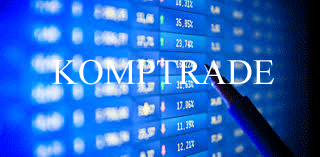Résultats de recherche
114 results found with an empty search
- Germany: Olaf Scholz with SPD wins the elections.
I n Germany, the Social Democrats have won the federal elections by a short head, and are better placed for a former government coalition for the first time since 2005 and to end 16 years with conservatives under Angela Merkel.
- The 3 companies to keep in your wallet in 2022.
We have identified 3 companies that will generate significant capital gains.
- EUR/USD remains below the resistance at 1.03
EUR/USD below 1.02.
- Aramco and Sinopec sign a partnership agreement in various sectors.
World oil leader Aramco and Chinese company Sinopec have signed a partnership agreement on oil services, carbon capture and hydrogen.
- Saudi Arabia: Aramco announces record earnings of $48.4 billion.
Aramco, the world leader in the oil sector, is benefiting from the high prices on the markets. In the second quarter, it posted record net profit, up 90% to $48.4 billion.
- Mariner east Pipeline incidents in Pennsylvania, companies charged of environmental crimes.
"The Mariner East pipeline system provides the needed infrastructure to transport propane, ethane and butane, all known as natural gas liquids (NGLs), from the Marcellus and Utica Shale fields to markets in Pennsylvania and beyond".
- Evolution of international gas prices in the second quarter of 2022
The world is facing a significant increase in energy prices. Gas, electricity and fuel bills are weighing more and more on family and professional budgets.
- US Senate approves $430bn plan for climate change, cut drug costs.
The US Senate on Sunday adopted Joe Biden's plan, it will most certainly be approved by Congress on Saturday, where the Democrats are in the majority.
- Order of magnitude of the economic impacts of high energy prices - Short term.
The diversification of energy sources has increased considerably over the past 30 years, thus reducing the contributory share of oil and more generally that of fossil fuels.
- Russia turns to China to sell the gas and oil it no longer exports to the EU.
Russian Gazprom has signed an agreement for a gas pipeline that will cross Mongolia and will transport up to 50 billion cubic meters of gas to China.
- XRPUSD: Three Black Crows Pattern Below 0.4095
Ripple XRP: after a temporary rise, the value is starting to fall against the Dollar.
- BTCUSD and XRPUSD Technical Analysis – 02nd AUG 2022
BTCUSD: Evening Star Pattern Below $24607















